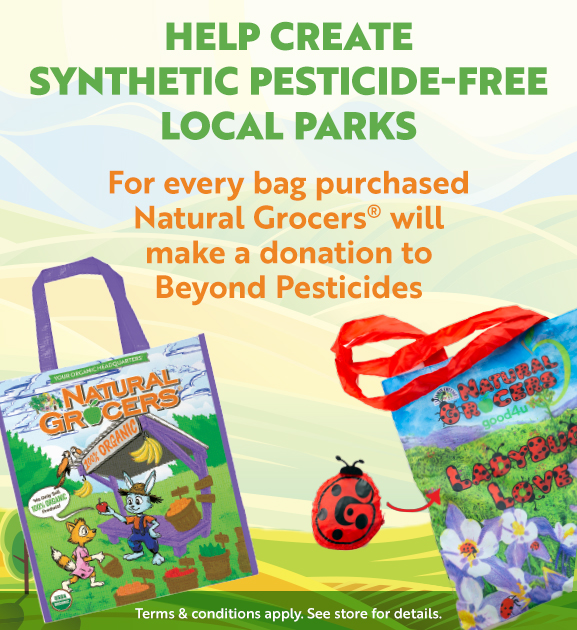09
Oct
On Indigenous Peoples Day, Highlighting Indigenous Knowledge To Address the Biodiversity Crisis
(Beyond Pesticides, October 9, 2023) On this Indigenous Peoples’ Day, the world turns its attention to the invaluable wisdom that Indigenous communities possess, highlighting their crucial role in addressing the global biodiversity crisis.¬† While facing disproportionate harm from unjust policies and practices that pollute, Indigenous communities are gaining federal and international recognition as key players in preserving the planet’s ecological balance.¬†
Many Indigenous communities have a profound connection to, and unique relationship with its land, carrying with them ancestral wisdom that has sustained their ecosystems for generations. Indigenous knowledge, passed down through centuries, emphasizes the intricate relationships between species, the balance of ecosystems, and the importance of coexistence with nature. This knowledge has allowed Indigenous Peoples to thrive sustainably for millennia. 
In the face of the growing biodiversity and climate crises, Indigenous wisdom and traditional insights are a part of the solution. During the 2022 White House Tribal Nations Summit, the White House Office of Science and Technology Policy (OSTP) and Council on Environmental Quality (CEQ) unveiled historic guidance for federal departments and agencies regarding Indigenous Knowledge. This guidance, accompanied by an implementation memorandum, acknowledges the importance of valuing and adopting Indigenous Knowledge into federal decisionmaking to enhance scientific and policy decisions. ‚ÄúAs the original stewards of the natural environment, Tribes and Indigenous communities have expertise critical to finding solutions to the climate crisis and protecting our nation‚Äôs ecosystems,‚ÄĚ‚ÄĮsaid CEQ Chair Brenda Mallory.‚ÄĮ‚ÄúThe guidance released today will help ensure that their voices are included across the Federal Government for the collective benefit of our communities and the planet.‚Ä̬†
Examples of traditional knowledge being used to improve biodiversity include: 
- Traditional knowledge is being utilized to improve biodiversity in the largest dam removal project in U.S. history, along the California-Oregon border. The Klamath River restoration and dam removal project is collaborating with the Lower Elwha Klallam Tribe, the Karuk Tribe, the Yurok Tribe, and other Native American tribes to plant and monitor nearly 17 billion seeds to recreate the pre-dam ecosystem. Upon completion, this project will open more than 400 miles of river for threatened species and contribute to a diverse native ecosystem. 
- Scientists are partnering with tribes to study traditional practices that improve biodiversity in ecosystems. One study was conducted on black oaks with interviews and workshops involving tribal members with ancestral knowledge of black oak burning practices. The study revealed opportunities to reintroduce low-intensity fires, along with thinning, to restore black oak stands that are conducive to acorn gathering. The findings also highlighted examples of overcoming challenges in restoring the socioecological benefits of black oak ecosystems for indigenous tribes.  
For more examples of tribes that are having positive environmental impacts, visit this Smithsonian website. To learn about international examples of indigenous knowledge to improve biodiversity, see this video.  
Encroachment on Indigenous lands, the expansion of extractive industries, and shifting climate patterns have threatened the delicate balance that many Indigenous Peoples maintain with nature. The global biodiversity crisis mirrors these interdependent systemic issues as species extinction, habitat degradation, and ecosystem imbalances become more urgent. Recognizing the importance of Indigenous knowledge remains an essential first step, and President Biden’s proclamation on Indigenous Peoples’ Day in 2022 underscored the significance of respecting Indigenous sovereignty and incorporating Indigenous voices into government decisions. As President Biden said, ‚ÄúOn Indigenous Peoples‚Äô Day, we honor the sovereignty, resilience, and immense contributions that Native Americans have made to the world; and we recommit to upholding our solemn trust and treaty responsibilities to Tribal Nations, strengthening our Nation-to-Nation ties. . . [T]oday, they remain some of our greatest environmental stewards.‚ÄĚ For more information on the proclamation, read Beyond Pesticide‚Äôs reporting here. Such recognition from the U.S. government signifies an awareness of the critical role Indigenous Peoples play in the conservation of biodiversity.¬†
-
The restoration of the Elwha River by the Lower Elwha Tribe, featured in the image above, serves as a shining example of how Indigenous and scientific partnerships can contribute to environmental restoration and conservation. The project began after the removal of two large hydropower stations. 
-
Kawerak, an Indigenous organization in western Alaska, issued a call for knowledge sovereignty and the indigenization of knowledge. Their concerns center on how research, research funding, and research prioritization have historically excluded Indigenous and local communities. The organization laid out a practical plan for repositioning research agendas to be more inclusive and respectful of Indigenous and local perspectives. 
Biodiversity is a global problem that requires international collaborations and diverse perspectives. The Indigenous Peoples’ Alliance of the Archipelago (AMAN), an independent organization representing over 2,500 Indigenous communities and approximately 20 million individual members across Indonesia, estimates that the nation is home to 50 to 70 million Indigenous individuals within its 250 million population. AMAN has played a pivotal role in advocating for Indigenous rights and knowledge. Despite legal recognition of Indigenous rights in the Indonesian Constitution, there have been challenges in fully implementing the Indigenous Peoples Law, which remains a bill in Parliament‚ÄĒleaving Indigenous communities vulnerable to land grabs and discriminatory regulations.¬†
Some of the challenges in utilizing traditional knowledge reflect broader issues of land rights. Indigenous communities frequently experience marginalization and discrimination within national legal systems, exacerbating their vulnerability to violence and mistreatment. When Indigenous Peoples lack human rights, it is not only unjust and inhumane, but it also undermines resource management and conservation practices that help sustain a livable world for all. Land return, also known as land reparations, land restitution, or land repatriation, refers to the process of recognizing land theft, the loss of lives, and the devastation of cultures.  
 
In alignment with environmental justice as a human rights issue, Marcos Orellana, PhD, Special Rapporteur on toxics and human rights and National Forum Series speaker, emphasized the legacy of severely contaminated sites on indigenous lands at the Permanent Forum on Indigenous Issues in 2022. From pesticide drift to exposure through contaminated waterways, ‚Äúthe list of toxic exposures on indigenous peoples is long,‚ÄĚ despite the Declaration on the Rights of Indigenous Peoples and International Labour Organization (ILO) Convention No. 169. Dr. Orellana further noted that ‚Äútoxics are a form of violence against the land and its people.‚Ä̬†
There is growing evidence of the role of Indigenous knowledge at the international level, yet despite this recognition, roadblocks remain that prevent genuine collaboration with Western science for effective conservation and resource management. One such challenge discussed in the opinion piece ‚ÄúScience Must Embrace Traditional and Indigenous Knowledge To Solve Our Biodiversity Crisis,‚ÄĚ is the¬† ‚Äúgatekeeper” problem, when a few individuals become the sole experts on a particular community or issue, potentially drowning out the diverse knowledge streams and grounded perspectives of Indigenous and traditional communities.¬†
Chief Edwin Ogar of the Ekuri Initiative, ICCA Consortium Honorary Member Gretta Pecl, and Council Member Tero Mustonen,  the opinion piece authors, explain that it is crucial to shift the link between policy and research away from simplistic, one-size-fits-all solutions and slogans and toward the needs on the ground. This includes investing in training and learning from past successes and failures.  
As the United States commemorates Indigenous Peoples’ Day, it is a moment to celebrate the resilience and wisdom of Indigenous communities. Their traditional knowledge offers solutions to the biodiversity crisis, emphasizing the importance of preserving sovereign Indigenous lands and communities‚ÄĒworking collectively to protect and preserve the planet’s rich tapestry of life for future generations.¬†
All unattributed positions and opinions in this piece are those of Beyond Pesticides. 
Source: Science Must Embrace Traditional and Indigenous Knowledge to Solve Our Biodiversity Crisis 











 Also speaking at the Forum will be
Also speaking at the Forum will be 







